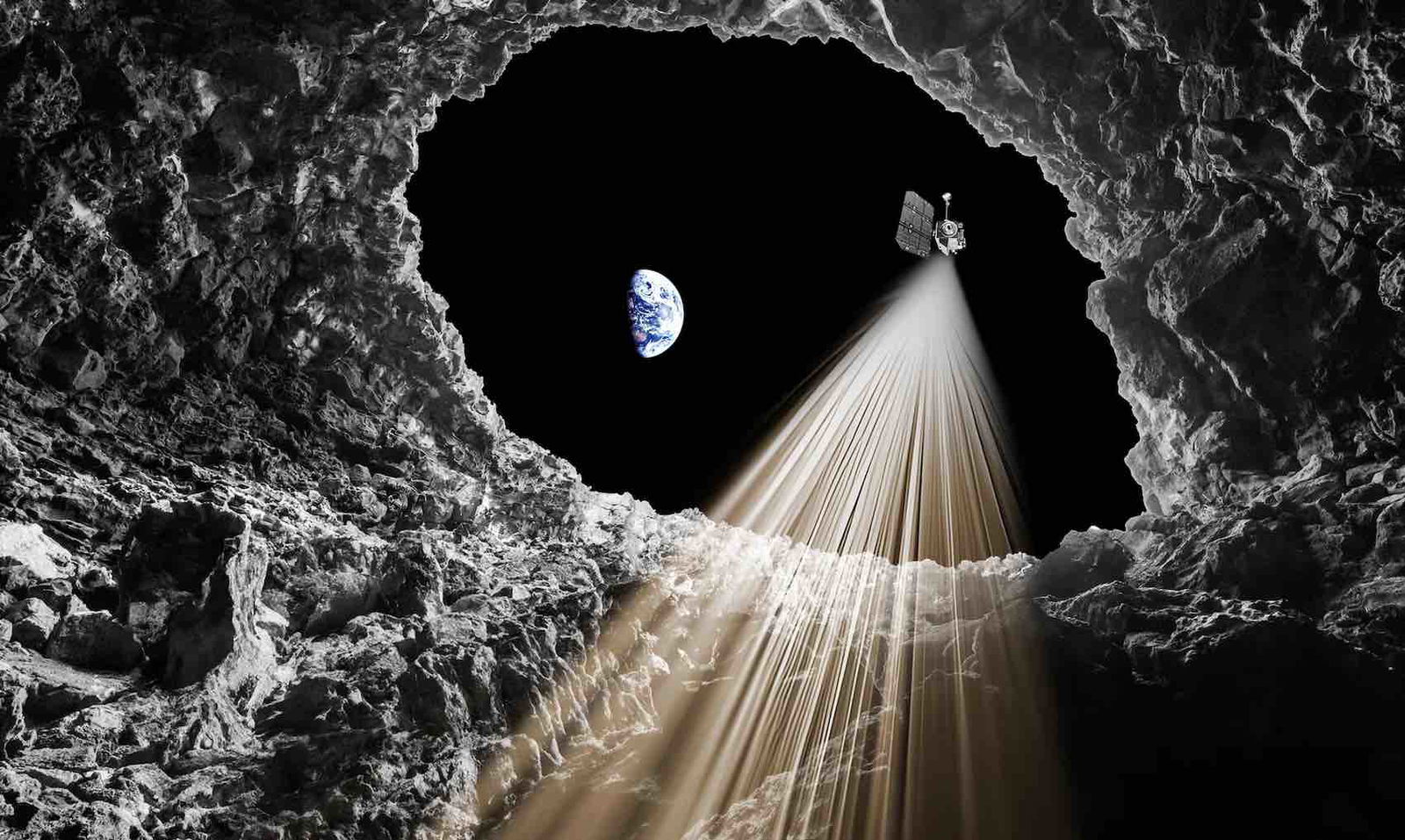NASA radar data confirms the existence of an underground “tunnel” near the famous Apollo-era lunar landing site

For the first time, scientists have confirmed the existence of an underground tunnel-like structure near the landing site of the first manned lunar mission. The discovery ends nearly half a century of speculation about the suspected existence of caves beneath the lunar surface.
On July 20, 1969, astronauts Neil Armstrong and Buzz Aldrin became the first humans to set foot on the lunar surface after making a soft landing in the Apollo 11 lunar module on the lunar plain of the famous Mare Tranquillitatis (Latin for “Sea of Tranquility”).
According to the findings of an international team of researchers led by the University of Trento in Italy, the existence of an underground tunnel-like lava cave beneath the Mare Plain has now been confirmed.
This was revealed in a new study in the journal Nature Astronomy, based on data from NASA’s Lunar Reconnaissance Orbiter (LRO).
The discovery of the tunnel-like structure is considered an important milestone for a better understanding of the various geological components of the Moon. It also offers a potential shelter that could be available to astronauts on future manned missions.
Lorenzo Bruzzone, a professor at the University of Trento, said the existence of such underground structures had long been suspected, but the team’s discovery was the first confirmation of their existence.
“The existence of these caves has been suspected for over 50 years,” Bruzzone said in a statement, “but this is the first time ever that we have been able to prove their existence.”
Data originally obtained in 2010 with the Miniature Radio-Frequency (Mini-RF) instrument on board LRO, including radar reflections from a pit discovered in Mare Tranquilitatis, were re-examined by the research team.
“Thanks to the analysis of the data, we were able to create a model of part of the pipe,” said Leonardo Carrer, a researcher at the University of Trento who was involved in the new findings.
“The most likely explanation for our observations is an empty lava tube,” said Carrer.
Given the challenging environmental conditions on the lunar surface, where temperatures can reach up to 127 °C on the illuminated side and drop to freezing lows of nearly -173 °C on the unlit side, lava tube caves could be an ideal shelter for astronauts on the Moon.
Such a tunnel-like underground facility would not only be an ideal location for underground shelters, it could also provide some protection from the cosmic and solar radiation that affects the lunar surface and can be up to 150 times stronger there than on Earth.
The Moon’s thin atmosphere also offers little protection from meteorite impacts, which over time have formed the natural satellite’s distinctive cratered surface. Creating refuges in underground lava tube caves could help reduce the constant threat of such impacts.
Wes Patterson, principal investigator of the Mini-RF at the Johns Hopkins Applied Physics Laboratory, said the team’s findings “show both how radar data from the moon can be used in novel ways to answer fundamental questions in science and exploration, and the importance of continuing to collect remote sensing data from the moon.”
“This includes the current LRO mission and hopefully future orbiter missions,” Patterson said.


The discovery is described in a new study entitled “Radar evidence of an accessible cave conduit on the Moon below the Mare Tranquillitatis pit,” which is published in Natural astronomy on July 15, 2024.
Micah Hanks is editor-in-chief and co-founder of The Debrief. He can be reached by email at [email protected]. Follow his work at micahhanks.com and on X: @MicahHanks.



